Review: Apple iPhone X
Nov 9, 2017, 7:00 AM by Eric M. Zeman

Apple's iPhone X represents the company's vision of the future. If we follow Apple's gaze, we see an all-screen handset with advanced facial recognition and powerful imaging features. The iPhone X is no doubt a big step forward for Apple, but is that step in the right direction? Find out in Phone Scoop's full review.
Is It Your Type?
The iPhone X is for Apple lovers who want something fresh to admire and show off. It's the first genuinely new smartphone design from Apple since the 2014 iPhone 6, and that makes it compelling in its own right. Toss in advanced features such as Face ID, Animoji, and the all-screen design, and you have an iPhone that finally breaks new ground. Be prepared to pay up, however, as the iPhone X is one of the costliest smartphones ever.
Body
It's often said that "change is the only constant." It seems like this is rarely said at Apple. Between 2014 and 2017, the company trotted out no less than four generations of iPhones that were nearly identical in appearance and basic functionality (iPhone 6, 6s, 7, 8). The company likes to stick with its designs for years at a time, presumably because it wants them to become iconic, which takes time. While the designs are nice, they can eventually seem stale compared to the fast-moving competition.
This is what makes the iPhone X so important: It's the first time Apple has embraced a true and significant change in its core money-maker in years. And we may be stuck with this design for a few years to come.
Apple competitors began adopting a new screen aspect ratio early this year. Devices such as the Samsung Galaxy S8 and LG G6 pioneered ~2:1 screens and they were rapidly followed by others. The taller screen shape permits an "all-screen" appearance.
One of the first pitches about the iPhone X you'll see on Apple's web site is that "it's all screen." Thank goodness, because the bezels surrounding the screens on older iPhones (and even the new iPhone 8) give them an outdated look.
Despite the new screen size/shape, the iPhone X is an Apple smartphone through and through. From a distance, it's almost indistinguishable from the smaller iPhone 8. The front glass panel of the X is curved along the edges and it tucks into the metal frame seamlessly. The same can be said of the glass that forms the rear surface. The metal frame itself is rounded gently and is comfortable against your skin. There are no sharp or pointy edges anywhere; the iPhone X is incredibly smooth all the way around.
The X comes in space gray or silver. Similar to the iPhone 8/Plus, the glass of our "space gray" iPhone X review unit definitely looks more gray than black. The "silver" version looks nearly white to my eyes, rather than a true silver.
Apple designed the iPhone X for everyone. It splits the middle when compared to the smaller iPhone 8 and larger iPhone 8 Plus, though it's a bit closer in size to the 8. For another point of comparison, it's shorter but wider than the Galaxy S8. The X is a really, really nice size (5.65 by 2.79 inches) and weight (6.14 ounces). The size and shape together make the iPhone X one of the most comfortable devices to hold and use over time. It's easy to carry about, and fits into most pockets with ease. If you love mega-screen phablets, it's possible the iPhone X may feel too small to you. To be quite honest, I wish Apple had targeted a 6-inch screen rather than 5.8.

The quality of materials and manufacturing is world-class, as expected. Apple builds some of the highest-quality hardware in the world. The glass and metal of the iPhone X are outstanding.
Like the 8 and 8 Plus, the X has an IP67 rating for protection from water and dust. You can drop the phone in 1 meter of water for up to 30 minutes and still have a working phone when you pull it out. It handles running water, sweat, and rain with no problem. You needn't worry about letting it slip into the pool, kitchen sink, or bath.
You will, however, need to worry about dropping it. Two glass panels doubles the likelihood you'll break something. Early estimates from insurers and tear-down specialists suggest replacing a cracked rear iPhone X panel may cost as much as $275. Considering the X's $999 starting price tag, I highly recommend you protect it with a case.
Every iPhone since the original has relied on a home button for interacting with the user interface. Apple dropped the home button on the iPhone X. This introduces huge adjustments to the overall experience and user interface that will take even expert iPhone users time to adjust to.
The screen stretches from bottom to top; no home button, no bezels, just the notch. To me, the notch looks hideous. Apple scooped out a huge portion of the display to fit the earpiece speaker, user-facing camera, and Face ID sensors. The result is a grotesque black interruption to the display that even my 10-year-old can't understand. The screen looks like it has horns. I don't understand why Apple couldn't have given the iPhone X a slim bezel above the screen, like the S8 or V30, with no notch. I'm beginning to think Apple's design guru, Jony Ive, has lost his freaking mind.
Notch

Nothing else adorns the front of the iPhone X, and that's a positive. Many of today's top Android handsets have already done away with physical buttons on the front. Given the power of software, there's no longer a need for them and that leaves the iPhone X with a clean face that's all glass (if not necessarily all screen).
The ringer switch is right where you expect it to be on the left side. The switch is easy to find and use by feel, and the action is excellent. The separated volume buttons below the ringer switch have good profiles, but travel and feedback is minimal. They double as shutter buttons when using the camera. The screen lock button and SIM card tray are positioned on the right edge of the phone. The screen lock button is much longer than those of older iPhones. Action on the button is pretty good, but I wish it were better.
The iPhone X skips the headset jack. The included wired earbuds plug into the Lightning port. Like the iPhone 7, 7 Plus, 8, and 8 Plus, the iPhone X can't charge and play music via the Lightning port at the same time, unless you spend extra money on an unwieldy dongle. Apple was one of the first to drop the headphone jack, and a few others have since followed. But at least the competition uses the industry-standard — and just as capable — USB-C connector. Lightning is an Apple proprietary connector.
The iPhone X's rear panel is perfectly flat, save for the camera module. The module protrudes significantly. On the iPhone X, the camera module runs vertically (one lens on top of the other), while on the iPhone 8 Plus the camera module runs horizontally (one lens next to the other). Apple offered no explanation for this difference. I wish the module weren't so large, as it makes the phone wobbly when placed on a hard surface. Using a case mitigates this issue.
Camera Module
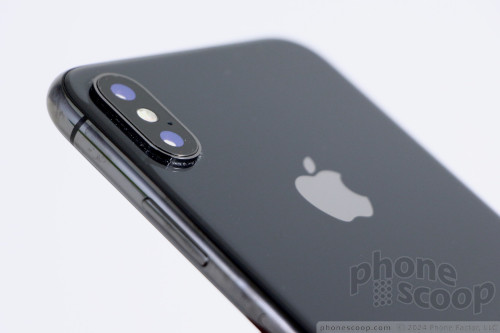
You've never been able to access the battery on an iPhone and that's certainly one thing Apple did not change with the iPhone X. The phone's rear panel is made of glass in order to facilitate wireless charging.
The iPhone X is a well-made phone that brings Apple into line with its direct competitors. I really wish the notch were not a thing, but nearly everything else about the iPhone X body is designed and executed well. It's a highly usable, high-quality smartphone.
Screen
It's one thing for Apple to change the shape and resolution of the iPhone's display, but it's quite another for Apple to also switch from LCD to OLED. iPhones have used LCD panels since 2007. This is a monumental change for the iPhone maker.
The screen runs 5.8 inches across the diagonal. That's from curved corner to curved corner, including the horns. Apple didn't go with an industry-standard resolution like Quad-HD; instead, the iPhone X packs an odd 2,436 by 1,125 pixels. The aspect ratio is even odder at 16.2:7.6. That's not 2:1, nor it is any aspect ratio any other panel maker has ever yielded. (If you delete the 186-pixel height of the horns, you get a 2,250 by 1,125 area, which is 2:1.) The pixel density is great at 458ppi. The display is incredibly sharp. Individual pixels are completely invisible even when you hold the phone close to your eyes. Text, graphics, and apps are perfectly smooth along the edges.
Why would Apple switch from LCD to OLED? Reasons might include contrast and efficiency. This HDR OLED panel (made by Samsung) has a 1,000,000:1 contrast ratio and wide color gamut. It is very, very rich. The blacks are among the deepest I've seen. Contrast and color saturation are far beyond what you'll see on previous iPhones.
The screen also adopts Apple's True Tone technology, which is available in the iPhone 8/Plus. True Tone automatically adjusts the white balance to match the ambient lighting. This means the screen's color will skew slightly blue or yellow so it is easier to read/see based on the surrounding light. To my eyes, the screen's tones most often looked warm (yellow-ish). You can turn True Tone off if you wish.
The screen's brightness is very good. I was able to use it indoors and out with no trouble.
Viewing angles are decent. There's no brightness drop when tilting the phone around, but you will see a slight blue shift. Apple has warned that this OLED panel may be subject to burn-in over time, something we discovered all too quickly on the Pixel 2 XL's OLED panel. We haven't seen any evidence of burn-in yet, however, and can't say whether or not it will be worth worrying about.
Bottom line: the screen is good, just as good as the screens Samsung puts on its own phones.
Signal
Just like the iPhone 8/Plus, the iPhone X is widely compatible with U.S. LTE 4G networks. There are two significant versions: the A1865 (with a Qualcomm modem) and the A1901 (Intel modem). The Qualcomm variant is for Verizon/Sprint, while the Intel variant is for AT&T/T-Mobile. The AT&T/T-Mobile version supports Band 66 for T-Mobile, but not the new band 71 (600 MHz). If possible, we recommend you buy the Verizon model, as it is compatible with all U.S. networks and provides the most flexibility to end users. (Apple is not selling an unlocked variant of the iPhone X right away.)
We tested the AT&T model with the Intel modem. The phone supports Cat 9 LTE and ran very well on AT&T's network. I didn't experience any trouble connecting to 4G and saw strong LTE performance at all times. Data speeds were excellent. You shouldn't have any trouble streaming media, such as music or video, over 4G. Voice calls connected on the first dial and the phone didn't drop any calls when moving at highway speeds. You can't ask for much more than that.
Sound
On the iPhone X, calls are about average for an AT&T device. Voices are clean and free of distortion through the earpiece, and sound a bit warmer than those I experienced with the 8 Plus. The earpiece generates enough volume to hear calls in most places. I was able to maintain conversations on city streets, in coffee shops, and in moving cars. People I spoke to through the iPhone X said I sounded excellent.
The iPhone X supports HD Voice via WiFi or VoLTE on AT&T's network. I noticed a dramatic improvement to voice clarity when connecting with other AT&T phones this way. If clarity is important to you, be sure to enable this feature, as the sound is incredible.
The speakerphone does a fine job. It introduces a small amount of distortion when pushed all the way, but not an egregious amount. The iPhone X is a fine instrument for speakerphone calls at home, the office, or in the car.
Ringers and alarms are surprisingly loud, and the vibrate alert is the best ever for an iPhone.
The iPhone X has decent stereo speakers. As it does on the iPhone 8/Plus, the earpiece leans toward trebly tones when listening to music, while the bottom-mounted speaker leans toward bass-y tones. Moreover, the earpiece can't deliver quite the sonic punch of the bottom-mounted speaker. That means sound is a little unbalanced when you hold the phone sideways. Even so, music and video sound good no matter how you're holding the phone, and the iPhone X produces enough volume to fill a small room with sound.
Battery
The iPhone X packs a 2,716 mAh battery, which is significantly larger than that of the iPhone 8, and even a bit larger than that of the iPhone 8 Plus. That spec, paired with the more-efficient OLED display, should mean superior battery life. Surprisingly, it does not.
Over several days' worth of testing, I found the iPhone X pushed through a full day, though just barely. The phone was often reaching the red zone about the time I went to bed. It lasted a good 15 hours on a single charge with plenty of time spent using the camera, surfing social media, browsing the web, and other activities that kept the screen on. My guess is most people will be satisfied, but power users may find it comes up a bit short.
There are a few things to help mitigate this. First, you should take the time to dial in the right mix for notifications so the screen isn't turning on all the time. One of the (more maddening) default iOS behaviors is to allow most apps to wake the lock screen to display notifications. Every time the screen comes on the battery drains just a bit more. Tweak your apps so only the most important ones wake the screen. This alone helped my device get an extra hour of life per day. Second, you can take advantage of the battery saver tool. You can put the phone in low-power mode manually, and this dims the screen, reduces notifications, and so on.
The iPhone X includes wireless charging thanks to the glass rear panel. The iPhone X relies on Qi, one of two competing (and incompatible) wireless charging standards. Qi is popular, and will likely become the dominant standard now that Apple is behind it.
I used the X with a Qi wireless charger and it certainly worked, though it was slower than charging via cable.
The iPhone X supports faster charging than older iPhones, but you have to spend extra money to take advantage. For example, the included charger won't charge the phone quickly at all. You're better off using an iPad charger, which will deliver a quicker charge thanks to the higher wattage. Even then, the iPhone X still won't charge as rapidly as competing Android handsets. The best solution is to buy a specific Apple charger with USB-C, as this charges the quickest.
Low-Power Mode
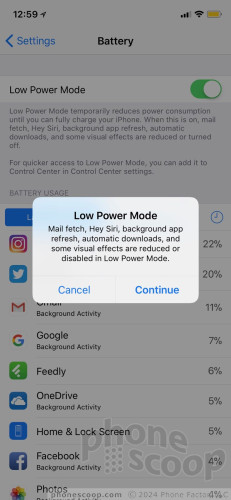
Bluetooth, GPS, NFC, WiFi
The iPhone X has all the same radios inside as the iPhone 8 and 8 Plus, and each performed just as well.
It includes Bluetooth 5.0, which ensures the iPhone X will be compatible with high-end Bluetooth 5.0 accessories. The X worked with all the Bluetooth devices I tested. Apple's Bluetooth software made pairing with a variety of devices a simple, painless process. Calls sent to mono headsets sounded good, while calls routed to my car's hands-free system were excellent.
I tested the iPhone X with Apple's own AirPods and the pairing process was instantaneous thanks to Apple's proprietary W1 chip. Music streamed perfectly via the Bluetooth connection, even if Apple's headphones are far, far from audiophile quality. I was happy with the quality of music I streamed to a Bluetooth speaker.
GPS worked fine with Apple Maps. The iPhone X was able to find me quickly, and location was as good as 20 feet. Real-time navigation worked perfectly.
Maps

NFC is on board and powers Apple Pay. On the iPhone X, users need to press the screen lock / power button twice to activate Apple Pay, authenticate the purchase using Face ID, then tap their phone to the supporting retail terminal. It works, but the extra steps means it isn't as seamless as the old Touch ID method.
iOS 11 made the NFC radio available to third-party app developers, though we have yet to see good examples of apps using this.
The X packs dual-band WiFi with MIMO. This means the X is compatible with the fastest WiFi networks. I had no trouble at all with the X's WiFi.
Comments
This can not stand....
iPhone X takes us to the next level of smartphone, while Eric is stuck in the android trap!
I am a professional photographer and Eric pointed out some of how terrific the camera of the Apple iPhone X is! But in nearly "every" catagory there was mocking and complaints with few compliments for a job well done.
The iPhone X is the fastest, best looking, best built smartphone ever created and I heard none of that here. The final scores were damn good but ran in confli...
(continues)
Nice, Pro Android, review...
Let’s look at it this way. Android phones (many models available) very nice phones. But the same OS is used on different manufacturers devices. iOS is on Apple, period. That lends itself to better hardware to software interplay. Perfect? No. Nor are the competitors.
But I find it tiring when slamming a platform is considered a review. For example, “The Notch”. Who cares? It’s not really that huge an issue, functionally does nothing to the iPhone, and (for me), it gives me an idea where the speaker and front camera are.
...
(continues)
Beware the glass back
"My car fender will be smashed from someone hitting me at 2 mph. This would be a design flaw"
Oh, that notch
The main reason Apple made that notch is for branding identity. It makes a statement even from across the room. There's no mistaking if somebody is using Apple's latest flagship phone in a sea of phones because that notch is unmistakable. Simple as that.
It's a rather brilliant bit of marketing and I expect many copy cats from the competition next year (save for Essential of course).























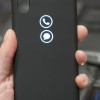 Iconcase Adds Notification Lights to Your iPhone
Iconcase Adds Notification Lights to Your iPhone
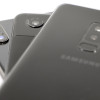 Smartphone Camera Shoot-Out: iPhone X, Pixel 2 XL, Galaxy S9+
Smartphone Camera Shoot-Out: iPhone X, Pixel 2 XL, Galaxy S9+
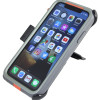 Review: Speck Presidio Ultra Case for iPhone X
Review: Speck Presidio Ultra Case for iPhone X
 Review: IK Multimedia iRig Pro I/O for iPhone
Review: IK Multimedia iRig Pro I/O for iPhone
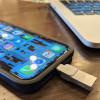 Review: Kingston DataTraveler Duo Bolt for iPhone
Review: Kingston DataTraveler Duo Bolt for iPhone
 Apple iPhone X
Apple iPhone X



